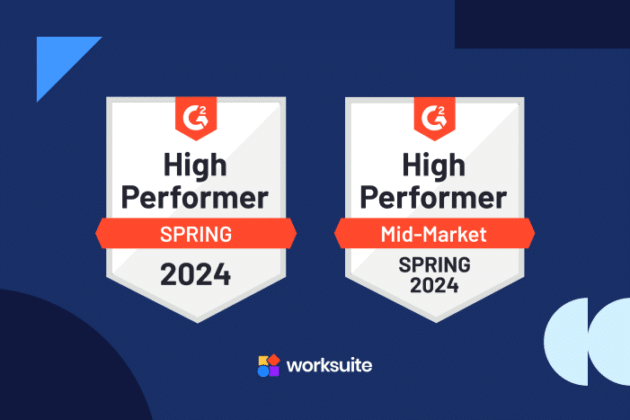
What Is Contingent Workforce Management? (The Future of Work)


A seismic shift is happening in the global workforce landscape. The traditional, rigid structures of full-time employment are gradually giving way to more flexible, project-based engagements.
This alternative — often referred to as contingent work — requires trained contingent workforce management skills to effectively employ it. Terms like freelancers, independent contractors, and temporary workers can also be used to describe these types of workers. Studies predict that 50% of the US workforce will be made up of freelancers or contingent workers by the end of the decade, and that’s not too far-fetched given we’re already at 36%. This shift is not only driven by the need for flexibility but also by the potential for significant cost savings.
This transformation isn’t a fleeting fad or a temporary post-pandemic move — it’s the future of work. Contingent workers aren’t just a transient trend. They are becoming a permanent and significant segment of the workforce. However, learning to manage the booming contingent workforce requires specific skills, tools, and know-how. Just because your managers know how to coordinate their in-house teams and remote workers doesn’t necessarily mean they have the skills to harness the potential of contingent workers.
Fortunately, you’re not on your own. We’re here to help.
Below, we’ll walk you through everything you need to know about contingent workforce management to help you leverage this flexible talent and meet your organization’s objectives efficiently.
What Is Contingent Workforce Management?
Contingent workforce management (CWM) is a comprehensive approach to sourcing, managing, paying, and optimizing your contingent workforce. This different nature of work requires a distinct set of management strategies and tools to assist with onboarding, workflows, off-boarding, and the like. Integrating CWM into your overall workforce strategy ensures that you can effectively leverage this growing segment of the labor market.
A contingent workforce consists of freelancers, temporary employees, consultants, and other non-permanent workers engaged on a project or contract basis. Unlike traditional employees, contingent workers aren’t bound by a long-term, fixed employment contract — and this provides both the organization and the worker with greater flexibility.
Why Managing a Contingent Workforce Matters (Now More Than Ever)
The trajectory of contingent work grows steeply and steadily over the past decade. Everything from remote work policies to tech layoffs leads talent to ditch traditional full-time employment in favor of freelance contracts and gig work. By the end of the decade, we’ll likely have over 90 million freelancers in the US alone.
Over 94% of tech companies already use contingent workers, and 21% of those plan to increase the number of freelancers and contractors. What’s more, a Gartner study found that 32% of organizations across all industries plan to replace full-time employees with contingent workers to reduce costs.
The rise of the contingent workforce isn’t just a statistical trend — it’s a paradigm shift reflecting evolving demands and expectations. Mastering contingent workforce management is essential for organizations to stay agile and competitive in a rapidly changing market.
Here’s why:
- Access to Specialized Talent: With the rise of project-centric engagements, organizations can tap into a vast pool of specialized talent without the long-term financial commitment of full-time employment.
- Operational Flexibility: The ability to scale up or down based on project demands is a pivotal advantage in today’s fast-paced business environment.
- Cost Efficiency: Organizations can use contingent workers to significantly reduce labor costs while still accessing the necessary skills and expertise.
- Technological Advancements: Using platforms like Worksuite for streamlined management of contingent workers fosters better coordination, performance tracking, and overall project management.
- Competitive Edge: In a market where agility and innovation are key, having a well-managed contingent workforce can provide a significant competitive advantage.
Contingent Workforce Program Manager — A Future-Proof Career Path
As organizations transition to hiring more contingent workers, they’ll need experienced talent to make the most of their investment.
Enter: The contingent workforce program manager.
This individual is responsible for orchestrating the contingent workforce to ensure it’s aligned with organizational goals, driving business objectives, and delivering value to the company.
Here’s what some of their key responsibilities look like:
- Strategic Planning: Forecasting contingent labor needs based on project pipelines and organizational objectives.
- Sourcing and Onboarding: Identifying the right talent for projects, negotiating contracts, and ensuring a smooth onboarding process.
- Performance Management: Monitoring and evaluating the performance of contingent workers to meet project objectives and maintain quality standards.
- Compliance and Risk Management: Guaranteeing compliance with legal and organizational policies, managing risks associated with contingent labor, and addressing any issues that arise.
- Cost Management: Monitoring and controlling costs associated with the contingent workforce to meet budget constraints.
- Technology Utilization: Leveraging technology platforms like Worksuite to streamline the management of contingent workers.
- Communication and Relationship Management: Fostering positive relationships with contingent workers, internal teams, and external vendors.
How to Source, Onboard, and Manage Contingent Workers
Managing a contingent workforce requires a non-stop dance between sourcing, onboarding, managing, paying, and offboarding. When there’s a breakdown or bottleneck between any of these stages, it can impact complete workflows, budgets, and deadlines.
Sourcing
- Identify Needs: Clearly define the skills, experience, and expertise required for the project at hand.
- Use Multiple Channels: Leverage various sourcing channels like online freelance platforms, staffing agencies, and professional networks to find the right talent.
- Vet Candidates: Conduct comprehensive interviews, check references, and review portfolios to ensure a good fit.
- Negotiate Fair Terms: Establish clear contracts outlining the scope of work, deliverables, timelines, and compensation.
Onboarding
- Have an Orientation: Provide an orientation to acquaint contingent workers with the organization’s culture, processes, and expectations.
- Provide Access to Resources: Provide the necessary tools, information, and access to resources required to perform their tasks efficiently.
- Establish Communication Channels: Set up regular check-ins and provide clear channels for communication to address questions and provide feedback.
Managing
- Monitor Performance: Keep a close eye on the progress and quality of work to align with project objectives.
- Make Adjustments: Provide timely feedback and make necessary adjustments to keep the project on track.
- Mitigate Risks: Monitor compliance with contractual and legal obligations and manage any risks associated with contingent work.
- Use Technology: Use platforms like Worksuite to streamline project management, communication, payment, and performance evaluation.
Paying
- Create Transparent Agreements: Ensure payment terms, rates, and schedules are clearly outlined in the contract before starting work.
- Process Timely Payments: Stick to the payment schedule, making sure that invoices always process on time to maintain positive relationships.
- Use Automated Payment Systems: Employ automated payment systems to streamline the payment process and reduce errors. Plus, maintain compliance with tax and other legal requirements.
- Maintain Clear Records: Keep detailed and accurate records of payments, expenses, and other financial transactions related to contingent work. This helps maintain clean accounting and visibility into freelancer spend.
From a logistical standpoint, managing a contingent workforce can be an absolute headache for HR, hiring managers and team leaders alike. Well, that is, until we introduced contingent workforce software solutions designed to take the pain out of logistics and streamline the entire process.
Worksuite is a complete, customizable solution to help you grow and organize your contractor network. We provide a one-stop-shop platform for sourcing, onboarding, managing, and paying your contingent contractors. Our flexible, user-friendly solutions automate the contractor onboarding process. This helps your team escape the spreadsheets and admin work, and get back to what really matters — driving business results.
Manage Your Contingent Workforce with Worksuite
As the line between traditional and contingent work continues to blur, a structured approach to managing a flexible labor force is no longer a nice-to-have. It’s a need-to-have.
That’s easier said than done, which is why we provide solutions to help.
Worksuite is your trusted partner in compliantly sourcing, onboarding, and managing freelancers and contractors. We streamline every aspect of contingent workforce management, helping you more efficiently capitalize on the future of work.
Schedule a live demo to see why 350,000 freelancers and the world’s top brands trust Worksuite.
See first-hand how Worksuite can transform your contingent workforce management.
Request Live DemoRelated Articles
Streamline your contingent workforce management.
Learn why 350,000 contractors and the world's top brands trust Worksuite to fuel their contingent workforce programs.






